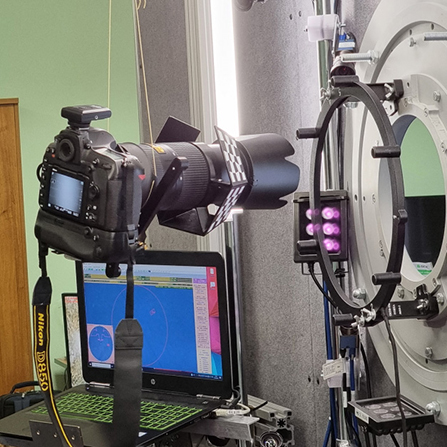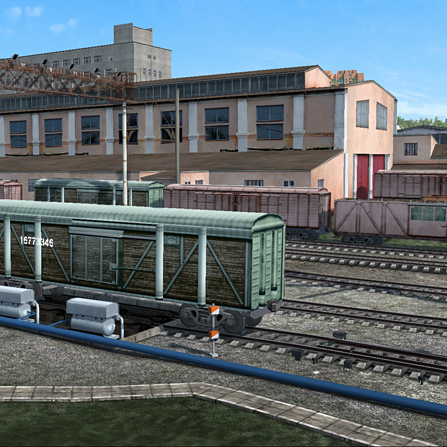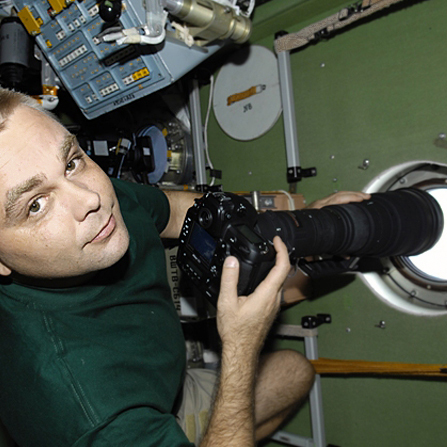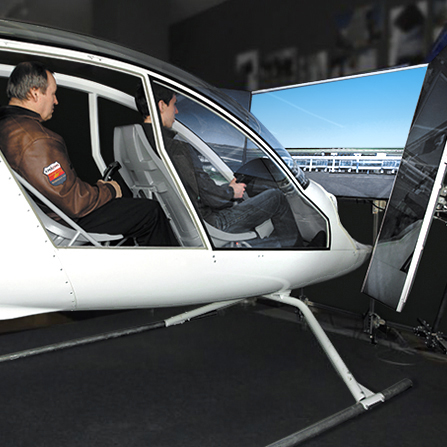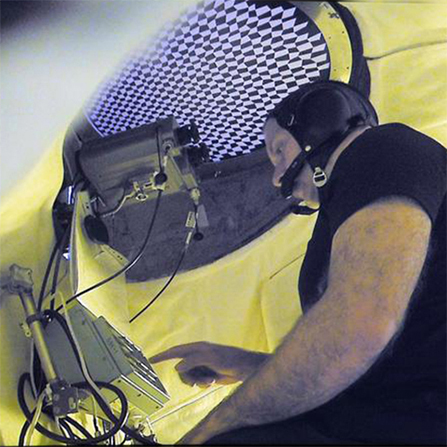

The manned Soyuz spacecraft is equipped with a standard system for determining distance and approach velocity. In the event of a failure of this standard system, a backup system is employed. This backup system relies on a laser distance meter, as it is not possible to accurately estimate distance and approach speed visually.
The objective was to develop a simulator that allows cosmonauts to learn how to effectively use a laser rangefinder.
In the course of the work:
– Modeled the entire alternative process for distance determination using a laser rangefinder;
– Created the necessary devices and software;
– Integrated the development into the Don-Soyuz TMA2 simulator.
For this purpose, a laser rangefinder simulator was created, along with an optical positioning system specifically designed for it. The simulator rotates freely on a standard static ball joint and features three degrees of freedom, which are determined by our positioning system.
The Meter Simulator includes a microdisplay that shows a video image visible through the eyepiece viewfinder. It is connected to computers, allowing it to fully simulate both normal and abnormal behavior.
A camera is mounted on the simulator, and above it, a single large black-and-white marker illuminated by an infrared source is statically positioned. The computing system processes the video stream from the camera and accurately determines the three orientation angles of the moving object, corresponding to the degrees of freedom.
Throughout the course of the work, we achieved the following performance metrics for the positioning system:
– mean square deviation in angle - less than 3’ angular seconds;
– time of positioning data output - less than 50 ms.
-
Client:
Центр подготовки космонавтов им. Ю.А.Гагарина.

